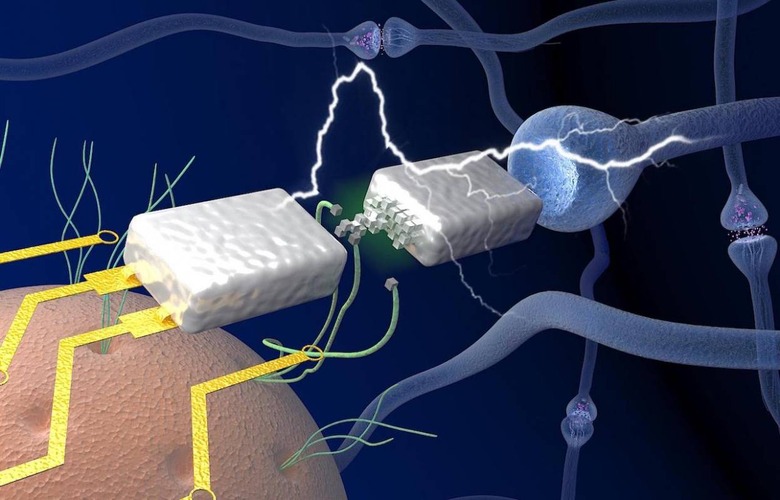Breakthrough Electronic Cells Could Learn Like A Human Brain
An innovative new artificial synapse could pave the way to creating computers that operate like the human brain, and potentially one day allowing for electronics that could integrate seamlessly with our own cortex. Neuromorphic computing aims to model electronic circuits on the ways biological brains work, but trying to get those circuits to operate as efficiently as what grows inside our skulls – as well as learn like brain cells can – has proved to be tricky.
One of the biggest challenges is the interconnects. In the brain, synapses join together the neurons and are used to carry so-called "action potentials" between them. These are very low charge messages, in the region of 80 millivolts.
Trying to get computers down to similar levels for their interconnects, however, has been a massive hurdle. Conventionally, they'd see 1+ volt charges, for example. It means that attempts to build artificial "brains" are hampered by inefficiency.
Now, a team at the University of Massachusetts Amherst claims to have figured out an artificial alternative to biological synapses. In their research into protein nanowires, they've come up with a design for a neuromorphic memristor, or "memory transistor," which works at voltage levels in the same range as the brain. A study into the technology was published today in Nature Communications.

The protein nanowire were taken from the bacterium Geobacter, developed by fellow UMass Amherst microbiologist and co-author of the new study, Derek Lovely. These have the advantage of being more stable in liquids like water or bodily fluids, compared to silicon nanowire which has been another area of focus for researchers in the field. By shearing nanowires off the bacteria, they can use the conductive protein for their experiments.
"This is the first time that a device can function at the same voltage level as the brain," study co-author Jun Yao explains. "People probably didn't even dare to hope that we could create a device that is as power-efficient as the biological counterparts in a brain, but now we have realistic evidence of ultra-low power computing capabilities. It's a concept breakthrough and we think it's going to cause a lot of exploration in electronics that work in the biological voltage regime."
By passing tiny on-off pulses in positive and negative charge through a nanowire in a memristor, new branding and connections were created inside. The researchers say that's similar to how the human brain learns, building new connections as memories.
"You can modulate the conductivity, or the plasticity of the nanowire-memristor synapse so it can emulate biological components for brain-inspired computing," Yao says. Compared to a conventional computer, this device has a learning capability that is not software-based."
For that to be truly useful, though, the speed had to match up with biological synapses. Getting to that point took about two years, the researchers say. We're still some way out from being able to build a true artificial brain, but there are other applications that Yao and study first author Tianda Fu believe are possible. That could include devices that better monitor heart rate, paving the way to an eventual device that "can talk to actual neurons in biological systems," Yao suggests.
